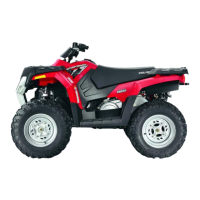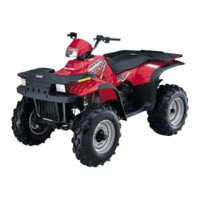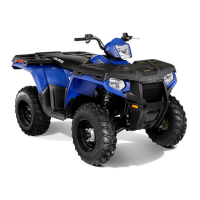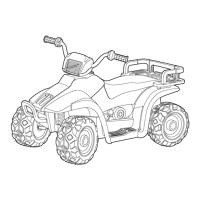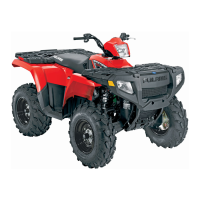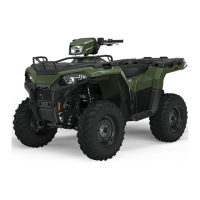CLUTCH
6.3
PVT MAINTENANCE/INSPECTION
UndernormaloperationthePVTsystemwillprovideyearsoftroublefreeoperation. Periodicinspectionandmain-
tenance is required to keep the system operating at peak performance. The following list of items should be in-
spected and maintained to ensure maximum performance andservice lifeof PVT components. Referto thetrou-
bleshooting checklist at the end of this chapter for more information.
1. Belt Tension, Drive to Driven Clutch Offset, Belt Width. See pages 6.18-6.21.
2. Drive and Driven Clutch Buttons and Bushings, Drive Clutch Shift Weights and Pins, Drive Clutch
Spider Rollers and Roller Pins, Drive and Driven Clutch Springs. See pages 6.10-6.12.
3. Sheave Faces. Clean and inspect for wear.
4. PVT SystemSealing. Refertoappropriateillustrationbelowandonthefollowingpages. ThePVT systemis
air cooled by fins on the drive clutch stationary sheave. The fins create a low pressure area in the crankcase
casting,drawingairintothesystemthroughanintakeduct. Theopeningforthisintakeductislocatedatahigh
point on the vehicle (location varies by model). The intake duct draws fresh air through a vented cover. All
connecting air ducts (as well as the inner and outer covers) must be properly sealed to ensure clean air is
being used for cooling the PVT system and also to prevent water and other contaminants from entering the
PVT area. This is especially critical on units subjected to frequent water forging.
PVT DRYING
If water is ingested, shift transmission to neutral and rev engine slightly to expel the moisture and air-dry the
belt and clutches. Allow engine RPM to settle to idle speed, shift transmission to lowest available range and
test for belt slippage. Operate ATV in lowest available range for a short period of time until PVT system is
dry.
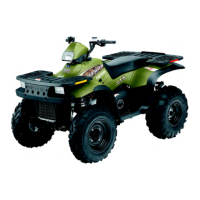
